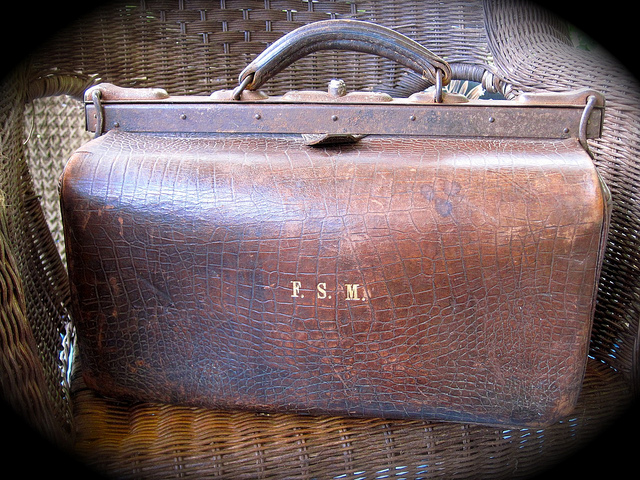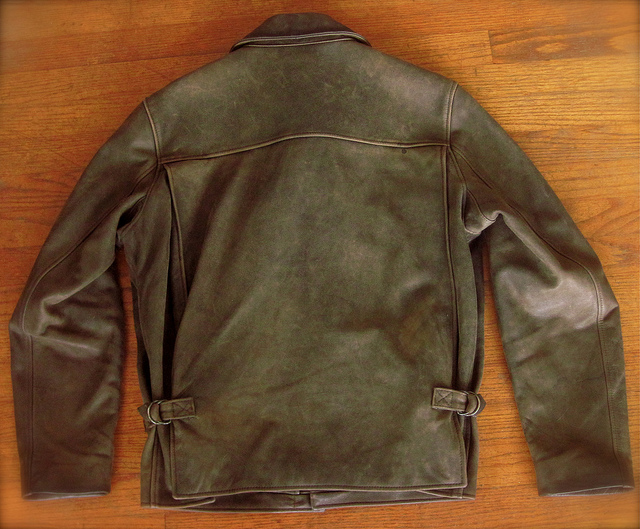
by Leather | Leather Care |
It’s no secret that leather is one of the most popular and widely used materials for footwear. Whether it’s sneakers, boots, high-heels, loafers, “boat shoes,” or even sandals, you can probably find them in leather. Of course, there’s a good reason for this trend: leather exhibits certain characteristics that aren’t found in other materials, such as strength, durability, longevity and style. Other materials may attempt to mimic these characteristics, but nothing compares to genuine leather. Leather Shoes and The Rain But leather is also susceptible to the elements, including moisture. This would leave some people to question whether or not you can safely wear leather shoes in the rain without causing damage to them. To answer this question, you CAN wear leather shoes when it’s raining outside, as long as you take some precautions to protect them. Dry The Inside Try to get into the habit of drying the inside of your leather shoes anytime they become wet. It’s not uncommon for moisture to seep into the interior of leather shoes when it’s raining outside. Even small amounts of leather — if left unchecked — may damage them, however. You don’t have to necessarily detail your shoes, as wiping the inside down with a clean paper towel should suffice. Watch Where You Step I know this probably sounds like common sense, but it’s still worth mentioning that you should watch where you step when wearing leather shoes. If it’s raining or has been raining, use caution to avoid stepping in puddles. Stepping foot-first into a puddle may saturate your leather shoes with water, making it difficult to dry them....

by Leather | Leather Accessories, Leather Care |
If you’ve ever owned a leather jacket or accessory, you’re probably well aware of what happens when it’s exposed to sunlight for any prolonged length of time. Its neutral tan color will begin to fade into a lighter, more beige-like color. Granted, some people prefer the look of faded leather, but others want to keep the original look of their leather products. So, how can you protect your leather from sun fading? Limit Sun Exposure Conventional wisdom should lead you to believe that limiting the time your leather product is exposed to the sun will protect it from fading. In order for leather to fade, it must be exposed to sunlight for a rather long period of time. You can wear a leather jacket outside day after day without noticing any change in its appearance — assuming you store it indoors. But if you leave the leather jacket outside where it’s exposed to sunlight every minute of the day, it will inevitably begin to fade. This is why it’s a good idea to get into the habit of bringing your leather products inside rather than keeping them outdoors. Apply Conditioner No, I’m not referring to the same condition that’s used to wash your hair. There are actually conditioning products made specifically for leather. These products contain essential oils that moisturize and protect leather from common forms of damage, including sun fading. Applying a small layer of conditioner to the surface of your leather product will create a barrier between it and the sun, preserving its natural color and characteristics. So, how often should you conditioner your leather product? It...

by Leather | Leather Care |
Thinking about buying a leather jacket in the near future? There’s no denying the fact that leather jackets are stylish and comfortable, making them a popular choice among men and women alike. While other fashion styles come and go from year to year, leather remains a classic choice that’s known to withstand the hands of time. To get the most use of a leather jacket, though, you’ll want to give it a little TLC, which we’re going to discuss further in this blog post. Limit Exposure To Rain There’s nothing wrong with exposing your leather jacket to a light spring/summertime rainfall. However, leaving it where it’s exposed to rain for hours or days on end will certainly cause damage. Leather is a highly durable textile, but like all natural textiles, it’s susceptible to the elements. So if you’re going to wear it outside during the rain, remember to bring it back inside — and to dry it promptly so there’s no moisture remaining on the surface. Beware of Soda Spills! I know this probably sounds like common sense, but it’s still worth mentioning that you should use caution to avoid accidentally spilling any drinks on your leather jacket, especially sodas. Why are sodas such a problem? Aside from the sticky residue they leave behind, sodas are highly acidic and can eat through the supple texture of leather. Clean Spills Promptly Okay, spills are bound to occur at some point or another. No matter how hard you try to prevent it, you will eventually spill a drink on your leather jacket. When this happens, act fast to clean it so...

by Leather | Bikers Jeans, Leather Care, Leather Jackets |
The right apparel can make a world of difference in your comfort, style and even safety when riding a motorcycle. Whether it’s a street bike, “chopper,” or anything in between, you should carefully choose an outfit that’s best suited for your riding needs. While motorcycle apparel is available in a wide variety of different materials, nothing beats good old fashioned leather. To learn more about leather apparel and why it’s the perfect choice for motorcycle riders, keep reading. Comfort Let’s go ahead and discuss the most obvious benefit of riding a motorcycle with leather apparel: comfort. Genuine — not fake or faux — leather is soft, supple and easy on the skin. It offers a naturally soft texture that doesn’t rub or chafe, which is particularly important when you’re riding a motorcycle for hours on end. Regardless of how far you intend to ride, you can rest assured knowing that leather apparel will offer you the highest level of comfort possible. Protection A lesser-known benefit of wearing leather motorcycle apparel is the added protection it offers. It’s not something most people want to think about, but accidents do occur, and more frequently than you may realize. According to the U.S. National Highway Traffic Safety Administration (NHTSA), in 2006, 13.10 cars out of 100,000 ended up in fatal crashes. The rate for motorcycles is 72.34 per 100,000 registered motorcycles. Wearing a leather riding suit isn’t going to prevent you from getting into an accident, but it may reduce your chance of sustaining a “serious” injury. Leather acts as a protective layer between your skin and the road, absorbing the blow...

by Leather | Leather Care, Leather Questions |
We’ve talked about some of types of leather on our blog, but we’ve yet to discuss the different forms. The truth is that most people don’t realize just how many different forms of leather there are. They assume leather is leather, with no real distinguishable differences. But subtle nuances between the different forms of leather can make a world of difference in its appearance and characteristics. Chrome-Tanned Leather Originally invented back in the mid 1850s, chrome-tanned leather is created using a special chemical known as chromium sulfate along with various chromium salts. It’s become the leading and most popular form of leather on the market, and for good reason: it is supple, soft and more pliable that other forms of leather. Furthermore, it doesn’t lose its shape drastically when exposed to water. Some people refer to chrome-tanned leather as “wet-blue” leather, a name derived from its light blue coloring that’s created through chrome tanning. Chrome-tanned leather takes about 24 hours to complete, which is a fraction of the amount required to produce other forms of leather. Vegetable-Tanned Leather The second most popular form of leather is known as vegetable-tanned leather. As the name suggests, it’s created using tannins and other compounds that are readily found in vegetables, trees and fruits. Vegetable-tanned leather has a distinct neutral brown color with various shades depending on the chemicals used during its tanning. According to some experts, vegetable-tanned leather is the only form of leather that’s acceptable to use in leather stamping and carving. Unlike chrome-tanned leather, vegetable-tanned leather is not suitable in water. When exposed to water for a prolonged length of...

by Leather | Leather Care |
Have you noticed your leather product splitting or cracking? Genuine (not faux) leather offers a truly brilliant appearance that’s not found in other materials. Its neutral color combined with subtle grain and ultra-comfortable texture, makes it the perfect textile for jackets, belts, shoes, furniture, and other products. However, it’s also susceptible to cracking if not properly care for. What Causes Leather To Crack? This is a question many people ask, especially if they’ve never owned a product made of genuine leather before. To better understand this phenomenon, you must first look at the properties of leather. If you were to observe it under a microscope, you would notice the surface contains thousands upon thousands of small holes (known as pores). These pores are responsible for withholding and releasing moisture, depending on the surrounding humidity. When leather is exposed to high-humid environments for a prolonged period of time, it will absorb the surrounding moisture. But when it’s exposed to low-humid environments for a prolonged period of time, the opposite will happen and will release moisture. If enough moisture is released from the leather, it will begin to split and crack open. Preventing Leather From Cracking Open Protecting your leather from damage caused by splitting and cracking is actually a lot easier than most people realize. Going back the underlying cause of this phenomenon, splitting/cracking occurs when leather is exposed to exceptionally dry environments. Therefore, conventional wisdom should lead you to believe that it can be prevented by storing your leather product(s) in an environment with a moderate climate. A good rule of thumb is to sustain a relative humidity of...








Recent Comments